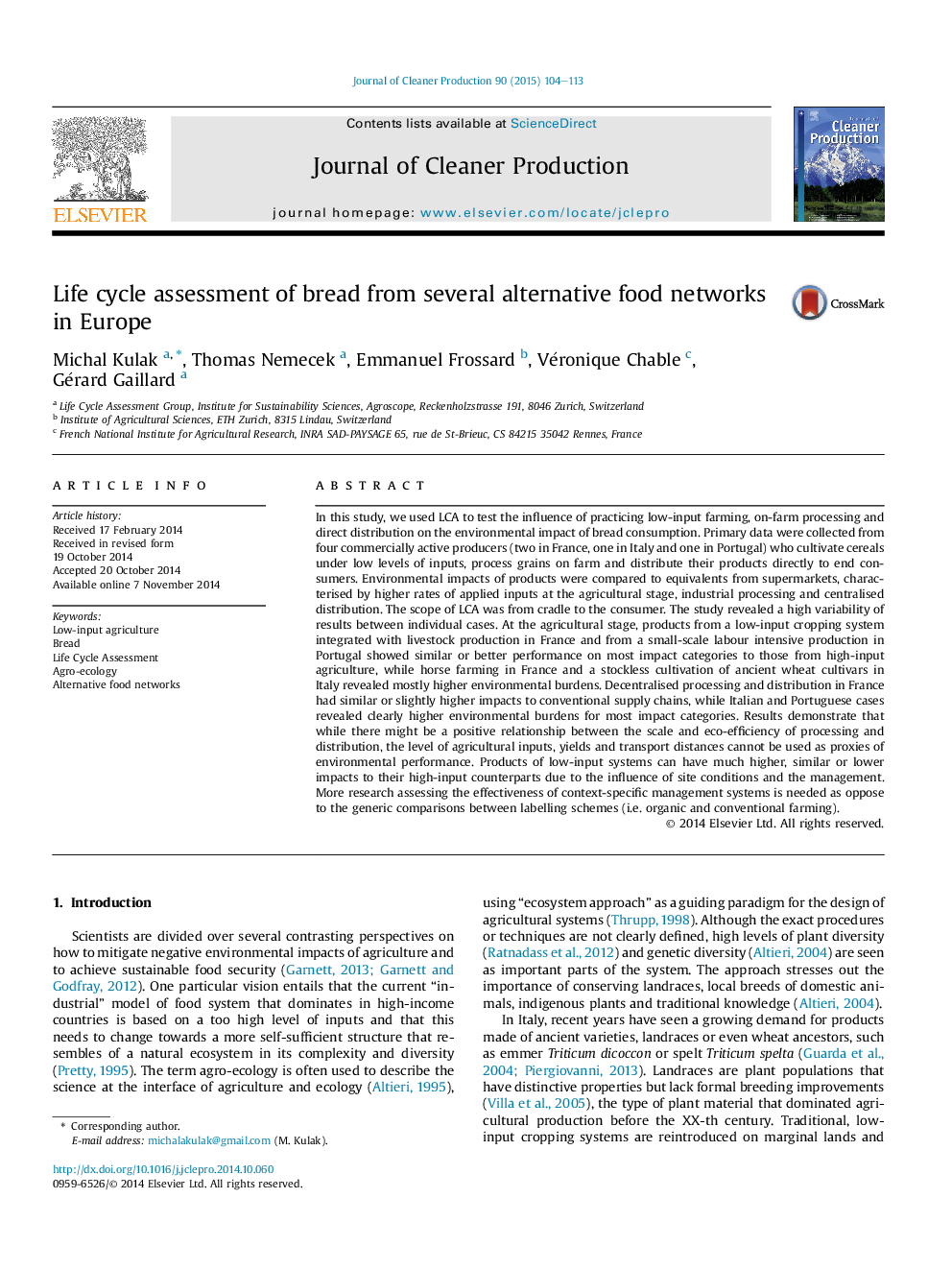| Article ID | Journal | Published Year | Pages | File Type |
|---|---|---|---|---|
| 1744667 | Journal of Cleaner Production | 2015 | 10 Pages |
•Bread from alternative food networks showed 1.7 – 10 times higher land use than in high input agriculture.•Bread from one case showed low environmental impacts despite very low yields.•Quantities of inputs, yields and distances are not sufficient indicators of environmental performance.•Baking with wood reduces global warming potential but increases human toxicity.•Consumer transport to buy the bread can determine the environmental impact.
In this study, we used LCA to test the influence of practicing low-input farming, on-farm processing and direct distribution on the environmental impact of bread consumption. Primary data were collected from four commercially active producers (two in France, one in Italy and one in Portugal) who cultivate cereals under low levels of inputs, process grains on farm and distribute their products directly to end consumers. Environmental impacts of products were compared to equivalents from supermarkets, characterised by higher rates of applied inputs at the agricultural stage, industrial processing and centralised distribution. The scope of LCA was from cradle to the consumer. The study revealed a high variability of results between individual cases. At the agricultural stage, products from a low-input cropping system integrated with livestock production in France and from a small-scale labour intensive production in Portugal showed similar or better performance on most impact categories to those from high-input agriculture, while horse farming in France and a stockless cultivation of ancient wheat cultivars in Italy revealed mostly higher environmental burdens. Decentralised processing and distribution in France had similar or slightly higher impacts to conventional supply chains, while Italian and Portuguese cases revealed clearly higher environmental burdens for most impact categories. Results demonstrate that while there might be a positive relationship between the scale and eco-efficiency of processing and distribution, the level of agricultural inputs, yields and transport distances cannot be used as proxies of environmental performance. Products of low-input systems can have much higher, similar or lower impacts to their high-input counterparts due to the influence of site conditions and the management. More research assessing the effectiveness of context-specific management systems is needed as oppose to the generic comparisons between labelling schemes (i.e. organic and conventional farming).
